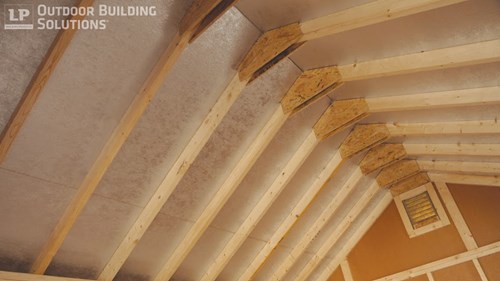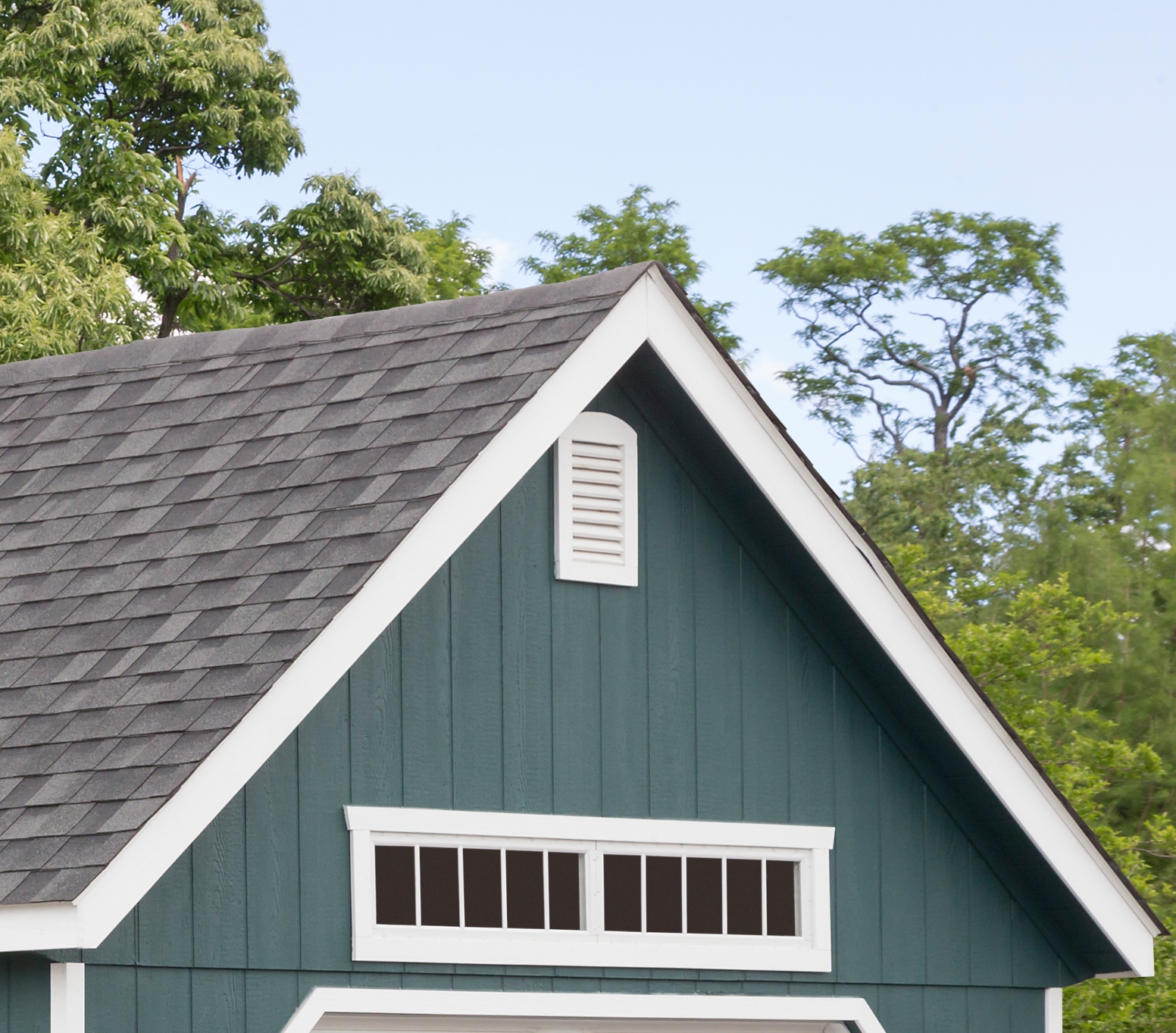Menu
Outdoor Living6 min
How to Keep Your Shed Cooler in Summer
In many parts of the U.S., a shed can get unbearably hot in the summer unless you take steps to ventilate it and prevent the sun’s radiant energy from penetrating. Too much heat in a shed is a bad thing, as it can damage liquids like paint or chemicals, sensitive equipment and items affected by humidity.
“We recommend several LP® Outdoor Building Solutions® products that can help to keep sheds cooler in the summer,” says Lenny Stahl, general manager of Dakota Storage Buildings in Milbank, South Dakota. “Both LP ProStruct® roof sheathing and walls made with LP® SmartSide® Trim & Siding feature SilverTech®, a finish-grade radiant barrier that reduces the amount of radiant energy that enters the shed.”

Radiant barriers reflect radiant heat rather than absorbing it, which helps keep internal temperatures down. These product videos will help you learn more about how radiant barriers are made and how they work.
Stahl adds that it’s important to properly ventilate the shed with doors, windows and venting options to keep fresh air moving in and allow harmful things like gasoline fumes to escape. “We recommend either gable vents or ridge vents for ventilation,” he says.

First-time shed buyers are often surprised by the breadth of choices in shed windows and doors. Some of these can be just as stylish as those found on a home.
Here are some other tips for keeping sheds cooler and more comfortable in the summer:
- Take advantage of available shade – Sheds stay more comfortable if you can place them near sheltering trees or privacy walls.
- Use lighter colors on siding – This is a given not just for sheds but for any living space that receives a lot of sunshine. The lighter color absorbs less sunlight and transfers less heat to the shed interior, whereas darker colors do the opposite.
- Consider adding an awning – In areas where late-afternoon sunlight can be brutal, an awning might be worth the investment.
If you spend a lot of summer time working in the shed or store heat-sensitive items in it, these tips will make it a cooler spot.
Continue Reading
Business Solutions
5 minWhat's the Value of a Warranty?
Warranties are everywhere, from small consumer products to commercial machinery and everything in between. Sometimes it feels like you need a law degree to understand the terms of a warranty.
Continue ReadingMaintenance7 min
What Should Homeowners Prioritize in a Build?
Whether it's a new phone, clothes, or a family car, today we’re often resigned to the fact that the new things we own won’t last forever. However, there is one thing that we still expect to endure for the long haul, and that’s our homes.
Renovation8 min
How to Approach Your Siding Project Like a Pro
Re-siding your home can completely transform its look and increase curb appeal exponentially, but completing a re-side is a big job and a significant investment. If you’ve never done it, it’s hard to know what to expect and how to prepare for a siding replacement.
Trends7 min
Everything You Need to Know About Board & Batten Style Siding
Board and batten style siding is enjoying a resurgence as a way to create visual interest in an otherwise blank wall. Many believe board and batten style is a timeless look that can leave your home’s exterior with major curb appeal for years to come.